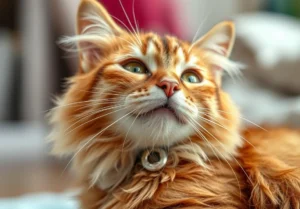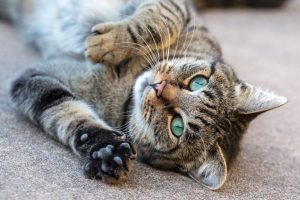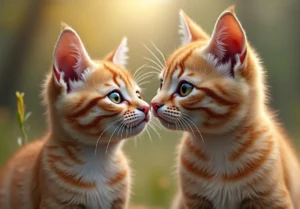Cats are fascinating creatures with many unique behaviors, one of which is the shedding of their claws. Have you ever wondered why cats claws shed?
Cats claws shed as part of a natural process to maintain their sharpness and health. This shedding behavior is essential for their overall well-being and serves several important functions.
Understanding the Anatomy of a Cat’s Claw
Cats’ claws are much more than just sharp tools for climbing and hunting. They are essential appendages that provide cats with balance, agility, and a sense of security. A cat’s claw is composed of layers of keratin, the same protein that makes up human hair and nails. This structure allows for flexibility and strength, enabling cats to retract and extend their claws as needed.
Unlike dogs, whose claws are always exposed, cats have the ability to retract their claws when not in use. This unique feature helps keep their claws sharp and prevents them from wearing down quickly. Additionally, the outer layer of a cat’s claw, known as the sheath, continuously grows and sheds to reveal a new, sharper claw underneath.
Understanding the intricate anatomy of a cat’s claw is crucial in appreciating why claw shedding is a natural and necessary process for felines. It allows cats to maintain their claws in optimal condition for various activities, from grooming to defending themselves.
The Importance of Claw Shedding for Cats
Claw shedding is a vital aspect of a cat’s grooming routine that serves several essential purposes. Firstly, shedding the outer layer of the claw helps remove any dirt, debris, or dead cells that may have accumulated, promoting cleanliness and hygiene. This process also allows cats to sharpen their claws naturally, ensuring they remain sharp and effective for hunting and self-defense.
Moreover, claw shedding enables cats to mark their territory effectively. As cats scratch surfaces, they deposit scent from glands in their paws, creating a unique scent signature. Regular shedding of the outer claw layer helps maintain this scent-marking behavior, which is crucial for communication and establishing boundaries with other felines.
In addition to these benefits, claw shedding can prevent painful conditions such as ingrown claws or infections. By shedding the outer layer regularly, cats reduce the risk of complications that may arise from overgrown or damaged claws. Keeping claws healthy through shedding is essential for a cat’s overall well-being and quality of life.
For more in-depth information on cat claw care, you can refer to this comprehensive guide from the American Association of Feline Practitioners: Cat Claw Care Guide.
Common Misconceptions About Claw Shedding
One common misconception about why cats’ claws shed is that it is a painful process for the cat. In reality, cats’ claws shedding is a natural and painless occurrence. Just like how we shed and grow our nails, cats shed their claws to make way for new, sharper ones. So, don’t worry if you see your cat’s claws on the floor – it’s all part of the normal cycle.
Another misconception is that cats shed their claws because they are unhappy or stressed. While stress can sometimes lead to excessive grooming which may result in more claw shedding, the act of shedding itself is not a direct result of emotional distress. It’s simply a regular part of a cat’s grooming routine.
Ultimately, understanding the facts behind claw shedding can help dispel any misconceptions and ensure you provide the best care for your feline friend.
Signs of Healthy Claw Shedding
When it comes to your cat’s claws, there are some key signs to look out for to ensure their shedding is healthy. Firstly, observe your cat’s behavior – if they are not excessively licking or chewing at their paws, then chances are their claw shedding is normal.
Additionally, healthy claw shedding should not cause bleeding or discomfort to your cat. If you notice any signs of irritation or pain, it’s important to consult your veterinarian to rule out any underlying issues.
Regularly checking your cat’s claws for signs of overgrowth or damage can also help prevent any complications. If you notice any abnormalities, such as ingrown claws or deformities, seek professional advice promptly.
Remember, keeping an eye on your cat’s claw shedding behavior can help you catch any potential issues early and keep your furry friend happy and healthy.
How to Help Your Cat with Claw Shedding
If you’ve noticed your feline friend’s claws shedding, don’t worry – it’s a natural process that helps keep their claws healthy and sharp. To support your cat during this time, there are a few practical tips you can follow:
Provide Scratching Posts: Make sure your cat has access to scratching posts or pads to help them naturally shed their claws. This will also help prevent them from scratching furniture or carpets.
Regular Nail Trims: Trim your cat’s nails regularly to help remove any excess or dead claw material. This can make the shedding process easier for your cat and prevent any discomfort.
Monitor for Signs of Distress: Keep an eye on your cat for any signs of distress or discomfort during the claw shedding process. If you notice any issues, consult your veterinarian for guidance.
Maintain a Healthy Diet: Ensure your cat is getting a balanced diet with essential nutrients that support healthy claw growth and shedding.
By following these simple tips, you can help your cat navigate the claw shedding process with ease and ensure their claws remain healthy and strong.
Fun Facts About Cat Claws
Cat claws are not just sharp tools for hunting and defense – they actually serve a variety of interesting purposes. Here are some fun facts about cat claws that you may not have known:
Unique Pawprints: Just like human fingerprints, each cat’s pawprints are unique to them, making them easily identifiable.
Retractable Claws: Cats have the ability to retract their claws when they’re not in use, keeping them sharp and protected.
Communication Tool: Cats use their claws to communicate with other felines through scratching and marking territory.
Heat Regulation: Cats use their claws to regulate body temperature by stretching and flexing their muscles.
Next time you see your cat shedding their claws, remember these fun facts to appreciate the unique and multi-functional nature of their claws.
The Relationship Between Claw Shedding and Scratching Behavior
Understanding the connection between a cat’s claw shedding and their scratching behavior is crucial. Cats scratch to shed the outer layers of their claws, helping to keep them sharp and healthy. This natural behavior also marks their territory and helps them stretch their muscles. By providing your feline friend with appropriate scratching posts, you can help them maintain their claws while protecting your furniture.
The Role of Diet in Maintaining Healthy Cat Claws
Your cat’s diet plays a significant role in the health of their claws. A balanced diet rich in essential nutrients like protein, vitamins, and minerals is essential for strong claws. Make sure your cat is getting high-quality cat food that meets their nutritional needs. Additionally, consider adding supplements like omega-3 fatty acids to support healthy claw growth.
Tips for Maintaining Healthy Cat Claws:
- Regular Trimming: Keep your cat’s claws trimmed to prevent overgrowth and reduce the likelihood of shedding issues.
- Hydration is Key: Make sure your cat has access to fresh water at all times to support overall nail health.
- Consult Your Veterinarian: If you notice any abnormal claw shedding or changes in your cat’s scratching behavior, consult your veterinarian for advice.
By understanding the relationship between claw shedding and scratching behavior, and paying attention to your cat’s diet and grooming routine, you can help ensure that your furry friend has strong and healthy claws.
Alex, a passionate animal lover, has experience in training and understanding animal behavior. As a proud pet parent to two dogs and three cats, he founded AnimalReport.net to share insights from animal experts and expand his knowledge of the animal kingdom.




